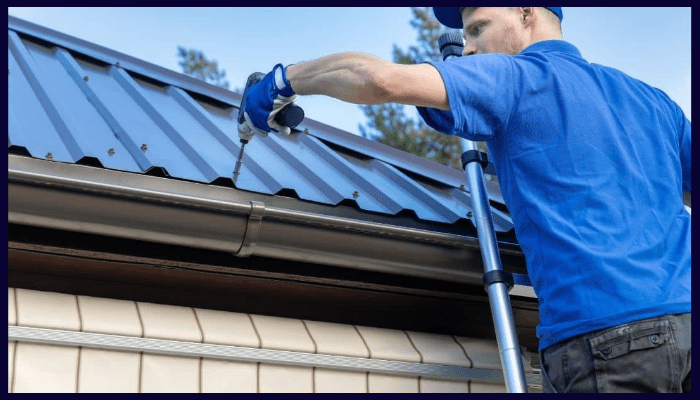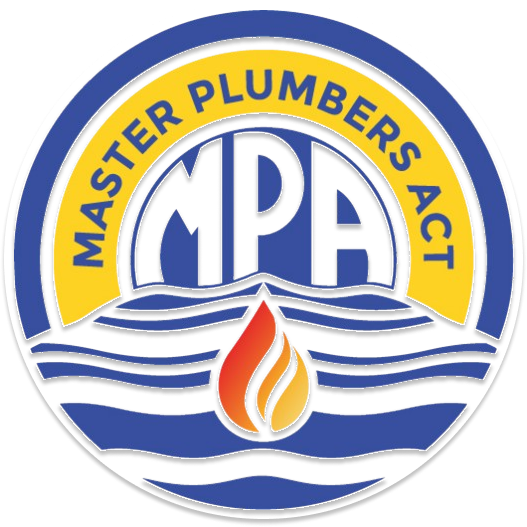Most Common Gutter and Downpipe Problems During Canberra's Winter
Table of Contents:
- What Are the Most Common Gutter and Downpipe Problems During Canberra’s Winter?
- Canberra's Winter Climate: Why It's Tough on Gutter Systems
- The Eucalypt Factor: Year-round Debris Causing Winter Blockages
- Preventing Winter Gutter Problems in Canberra
- Material Choices for Canberra's Winter Durability
- When to Call a Professional Plumber
- Frequently Asked Questions
When winter hits the ACT, many homeowners worry about keeping warm and checking their insulation. But there's something else that needs your attention: your gutters and downpipes.
Canberra's temperature swings from day to night are wild. The eucalypt debris adds to the challenge. This can really test your gutter system.
Here are the main gutter and downpipe issues in Canberra's winter. We'll explain why they happen and how to protect your home's drainage and foundation from expensive damage.
What Are the Most Common Gutter and Downpipe Problems During Canberra’s Winter?
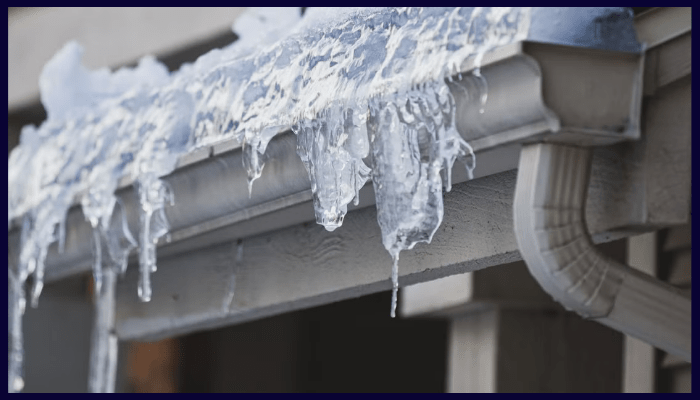
Blocked and Clogged Gutters
Clogged gutters top the list of plumbing issues every winter. Those gum trees around Canberra homes constantly drop bark, leaves, twigs and other debris into your gutters all year round.
Once this accumulated debris builds up, it blocks water flow and creates pools of standing water.
When temperatures drop near freezing overnight (which happens plenty in Canberra), that water turns into solid ice.
Massive ice chunks can block the channel. This may lead to downpipe blockages or even overflow during heavy rain.
Before you know it, you've got leaking gutters or water running straight towards your home's foundation.
Ice Dams and Roof Overflow
Ice dams are another nightmare for Canberra homeowners. July temperatures hover between 0.1°C and 1.1°C, bringing frequent frosts.
When snow or frost melts off your roof during the day, it runs down to your gutters. If your drainage is slow or blocked gutters are present, that water refreezes at the eaves.
Ice dams block drainage, pushing meltwater back under your roof tiles.
This can lead to water entering your ceiling cavity or fascia boards.
The result? Interior leaks, sagging gutters and some seriously costly repairs.
Downpipe Freezing and Structural Stress
Downpipes cop it particularly hard when they're already clogged with debris and then fill with rainwater or snowmelt.
If water gets trapped and freezes (expanding about 9% as it does), the pressure on joints, pipe walls and brackets becomes immense.
Older cast iron or thin metal downpipes often crack or collapse completely.
During a heavy downpour, blocked drains combined with ice create extra weight that can rip gutters straight off your roofline.
Water then pools right against your property's foundation.
Corrosion and Rust From Standing Water
Gutters with improper installation or incorrect slope let water sit there for ages. Mix in some debris buildup and winter cold, and you've created rust heaven.
Freeze-thaw cycles can wear down Colourbond® or Zincalume coatings faster than you think.
Rust spreads, joints break, and soon you need a full gutter replacement instead of just maintenance.
Canberra's Winter Climate: Why It's Tough on Gutter Systems
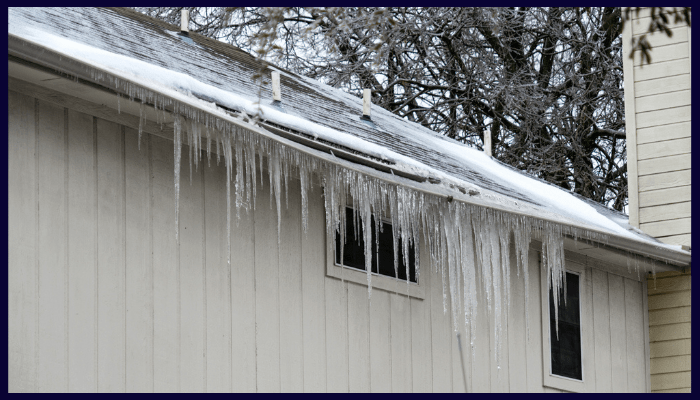
The Freeze–Thaw Cycle and Its Impact
Canberra's winter climate really puts your gutter system through the wringer compared to coastal areas. Daytime temps from June to August are comfy, around 12.8°C to 14.4°C.
But at night, they drop to near or below freezing. This big temperature change causes freeze–thaw cycles. These cycles can be a problem for your gutters.
Metal expands and contracts over time. Brackets can loosen, joints may fail, and seams might split. It's like your entire gutter system gets stress tested every single night.
Heavy Rainfall and Blocked Drains
Winter in the ACT isn't all about cold temperatures either. We cop some serious heavy downpours that catch people off guard.
If your drainage system has debris buildup or incorrect slope problems, it simply won't handle the water volume.
Blocked drains stop water from flowing smoothly through your downpipes. This leads to overflow into your stormwater system.
Your gutters end up dumping water straight onto your house walls and property's foundation. Soon, you might face water damage.
Dampness can seep through walls and lead to serious structural issues.
The Eucalypt Factor: Year-round Debris Causing Winter Blockages
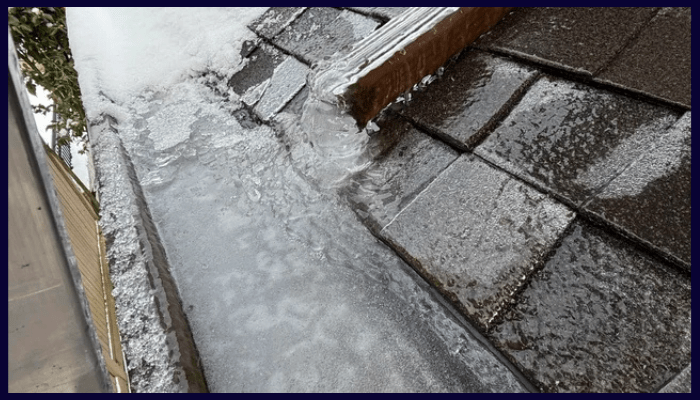
How Gum Trees Contribute to Blockages
Around 60% of ACT's urban trees are eucalypts, and they never stop dropping leaves, bark and those rock-hard gumnuts into your gutters.
This stuff piles up and creates serious blockages that many homeowners underestimate.
Gumnuts are particularly nasty because they anchor all the smaller debris and dirt together, creating a dam that traps water.
When freeze–thaw cycles hit this soggy mess, you've got major problems brewing in your downpipes and entire drainage system.
Neglected Gutters and Overflow Problems
People tend to forget about gutter maintenance until something goes wrong. But neglected gutters packed with debris become disaster zones in winter.
That heavy, waterlogged debris mixed with ice weighs a lot. This causes blockages and can make gutters sag or even pull away from fascia boards.
The overflow sends water cascading into gardens, under footings and against slabs. Before long, you’ll face foundation damage and moisture issues inside your home.
These can lead to expensive repairs.
Preventing Winter Gutter Problems in Canberra

Regular Cleaning and Maintenance
Smart homeowners book professional gutter cleaning twice yearly, preferably late autumn and mid-winter. Regular maintenance removes debris.
This stops water from freezing and prevents blockages during storms. It's much cheaper than dealing with water damage or gutter replacement later.
Gutter Guards and Debris Protection
Installing quality mesh gutter guards makes sense for Canberra homes surrounded by gum trees. These guards prevent leaves, bark, and gumnuts from entering the channel water system.
This keeps the water flowing smoothly and stops frozen blockages in your downpipes. They're particularly effective at stopping debris buildup that leads to overflow.
Correcting Slope and Installation Issues
Your gutters need proper slope towards downpipes (roughly 6mm per 3m) with correctly spaced downpipe entries. Bad installation or shoddy work that fails to meet AS/NZS 3500.
3 standards can cause pooling water. This leads to faster corrosion and ongoing repair needs.
Hiring a qualified plumber to check the slope and installation issues protects your investment. It also helps avoid expensive repairs later on.
Material Choices for Canberra's Winter Durability
Choosing the right materials is key when you’re trying to pick the
best gutters and downpipes for Canberra homes, especially with how tough the winters are here.
Steel options like Colourbond® or Zincalume are great choices, and it helps to compare
Colorbond vs PVC gutters when you’re deciding what will hold up best through Canberra’s winter.
They resist corrosion and manage heavy rainfall well. Plus, they handle tree debris effectively. Aluminium keeps things lightweight but you'll need solid brackets and room for thermal expansion.
Stainless steel performs amazingly but costs a fortune. No matter what material you pick, ensure you have expansion joints, good fixings, and professional installation in place.
That's what keeps your gutters working properly year after year.
When to Call a Professional Plumber
Call for help if you see any of these issues, as many of them are common signs your gutters and downpipes need replacing:
- Overflow after cleaning.
- Sagging gutters.
- Leaks at seams or joints.
- Ice in your gutters.
- Water pooling by your foundation.
Don't try to fix these gutter issues yourself. You might miss the real problems, like improper installation or the wrong slope in the system.
A licensed plumber can find the real issue with your gutters. They ensure water flows correctly by designing a lasting drainage system.
Want to protect your Canberra home this winter? Book a pro inspection now. It will check your gutter slope, joint integrity, downpipe flow, and overall drainage system health.
This way, you can catch issues before they start.
Frequently Asked Questions
Why Are My Gutters Overflowing in Winter in Canberra?
Winter overflow happens when clogged gutters meet blocked downpipes, then cop heavy rainfall on top. Frozen water causing blockages makes everything worse. If you've got incorrect slope or dodgy installation, that's probably contributing too.
How Often Should I Clean My Gutters and Downpipes During Canberra's Winter?
Canberra homes need gutter maintenance twice yearly: late autumn and mid-winter works best. Those gum trees never stop dropping debris, so regular cleaning prevents major blockages forming.
Can Blocked Downpipes Cause Structural Damage to My Home's Foundation?
Absolutely. Blocked drains force water to pool around your property's foundation instead of flowing away safely. Winter frost causes pooled water to freeze and expand. This can crack foundations and lead to serious structural issues.
What Gutter Material Best Suits Canberra Homes?
Steel systems like Colourbond® or Zincalume suit Canberra homes perfectly. They resist corrosion, survive freeze-thaw conditions and handle heavy rainfall loads without failing.
How Does Tree Debris Affect Gutters and Downpipes in Winter?
Leaves, bark and gumnuts from gum trees pile up in gutters and downpipes, blocking proper drainage completely. Water trapped in gutters freezes overnight. This creates ice blockages. These blockages cause gutters to sag, leading to rust and leaks.
What Are the Signs of Improper Installation of Gutters or Downpipes?
Check for water pooling in gutters. Look for sagging sections, leaks at joints, and dripping or crooked downpipes. Also, ensure water is flowing away from your house, not towards it. These all scream improper installation problems.
What Maintenance Steps Can Help Prevent Corrosion and Rust in My Gutters?
Keep water flowing freely with proper slope and clean gutters. Regularly clear out debris, install good gutter guards, and fix any sagging or joint issues before winter comes.
How Many Downpipes Should a Typical Canberra Home Have?
Roof size, pitch, and rainfall affect the numbers. In high-rainfall areas, you usually need one downpipe for every 10 to 12 meters of gutter. If you're getting overflow, you probably need more downpipes installed.
What is the Impact of a Freeze-thaw Cycle on Gutter Systems?
Water expands when it freezes. This puts a lot of pressure on seams, joints, and downpipe connections. Repeated cycles weaken everything. Splits appear, and you’ll notice more leaks and sagging gutters.
Are Gutter Guards Enough to Eliminate All Winter Gutter Problems?
Gutter guards help cut down debris and stop blockages. However, they can't fix issues like incorrect slope, low downpipe capacity, or other gutter problems. You still need a professional inspection. This ensures your gutters can handle common issues during Canberra’s winter.

